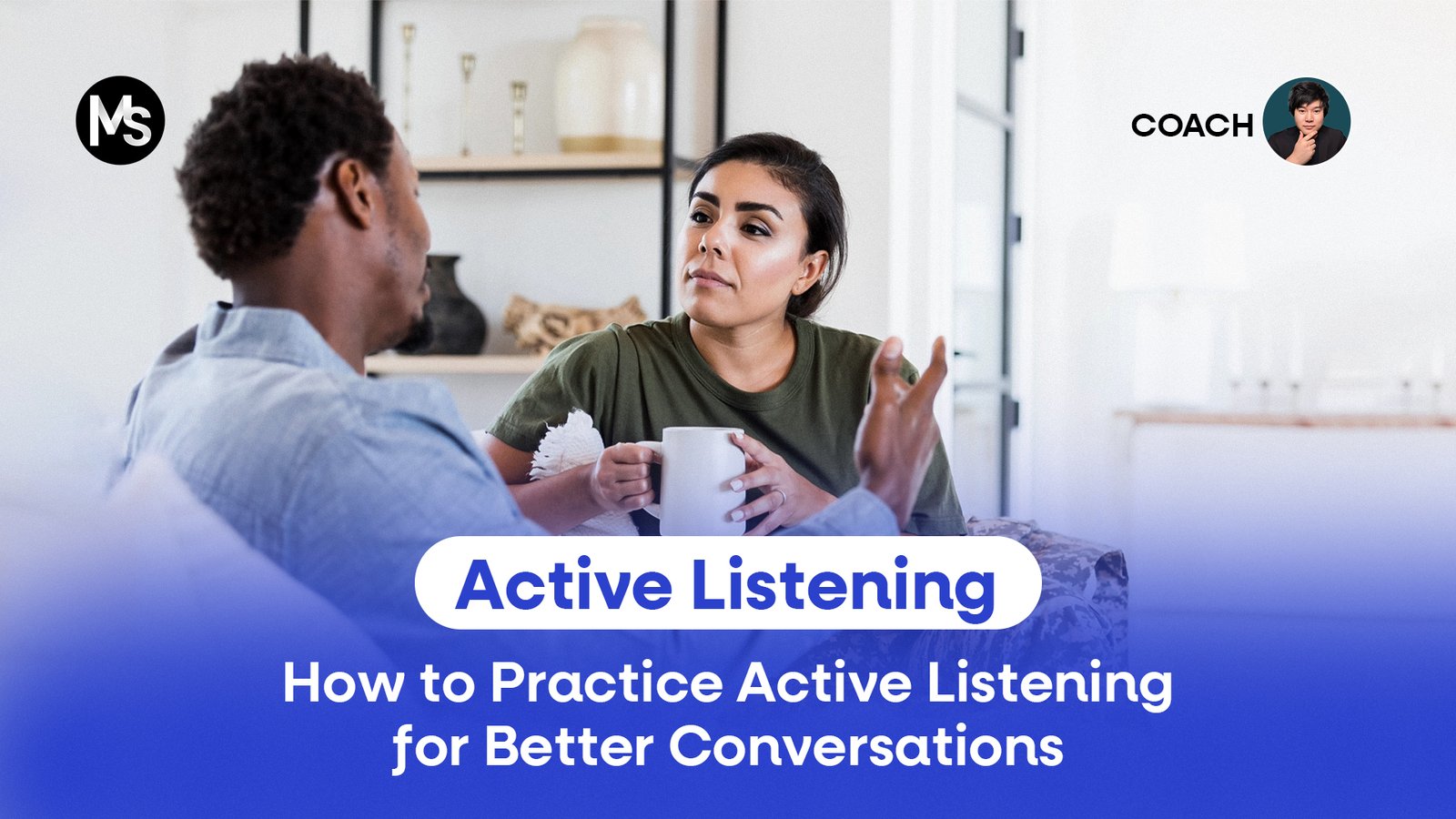Have you ever walked away from a conversation feeling unheard, or perhaps realizing you only caught half of what the other person said? In our noisy, fast-paced world, it’s easy to get caught up in our own thoughts, rehearsing what we’ll say next rather than truly taking in what’s being communicated. Yet, the ability to genuinely listen is one of the most powerful and transformative skills you can possess.
This isn’t about simply waiting for your turn to speak. This is about active listening – a conscious, empathetic effort to fully grasp the message, both spoken and unspoken. It’s the cornerstone of all meaningful interactions and a vital component of your foundational communication skills. Mastering active listening will not only improve your conversations but will also build stronger relationships, reduce misunderstandings, and enhance your overall understanding of the world around you.
In this comprehensive guide, we’ll dive deep into what active listening truly entails, why it’s indispensable, and provide practical techniques you can implement immediately to transform your conversations and connections.
What is Active Listening? A Deeper Dive
At its heart, active listening is a communication technique that requires the listener to fully concentrate on, understand, respond to, and then remember what is being said. It goes far beyond merely hearing words. It’s about:
- Focus & Attention: Giving your undivided focus to the speaker.
- Understanding: Gaining a complete grasp of both the literal content and the underlying emotions, intentions, and perspectives.
- Retention: Being able to recall key points and details from the conversation.
- Responding Appropriately: Providing verbal and non-verbal feedback that clearly shows you’ve understood, without judgment or premature solutions.
Think of it as the difference between passively letting sound enter your ears versus actively processing, interpreting, and connecting with the information being presented. Unlike passive listening (where you just hear sounds without engaging) or selective listening (where you only hear what interests you), active listening demands your full mental and emotional presence.
Why Active Listening is Indispensable (Benefits)
The impact of strong listening skills resonates across every facet of life. When you commit to listening better, you unlock a wealth of benefits:
- Builds Stronger Relationships: When people feel genuinely heard and understood, trust and rapport flourish. This applies to romantic partners, family, friends, and colleagues.
- Reduces Misunderstandings & Conflict: Many arguments stem from poor listening. Active listening clarifies messages, prevents assumptions, and allows for constructive dialogue, leading to more peaceful resolutions.
- Enhances Problem-Solving: By fully understanding a problem from the speaker’s perspective, you’re better equipped to offer relevant solutions and contribute effectively.
- Boosts Empathy: It helps you truly put yourself in someone else’s shoes, understanding their feelings and motivations even if you don’t agree with them. This is crucial for emotional intelligence.
- Improves Learning & Comprehension: Whether in a classroom, a training session, or a mentorship meeting, active listening is essential for absorbing new information and retaining knowledge.
- Increases Respect & Credibility: People naturally respect and value those who demonstrate genuine interest and understanding. This boosts your reputation as a thoughtful and reliable individual.
- Leads to Better Decision-Making: With a fuller, more accurate picture of situations and problems, your decisions become more informed and effective.
The Core Techniques of Active Listening (Practical Steps)
Ready to transform your conversations? Active listening is a skill, and like any skill, it improves with practice. Here are the core techniques you can start implementing today:
1. Give Undivided Attention (The “Be Present” Rule)
This is the first and most fundamental step. You simply cannot actively listen if your mind is elsewhere.
- Eliminate Distractions: Put your phone away, close unnecessary browser tabs, turn off the TV, or move to a quieter space. Give the speaker your complete focus.
- Make Eye Contact (Appropriately): Maintain comfortable, natural eye contact. This signals engagement and respect. Avoid staring, which can be unsettling.
- Body Language: Turn your body towards the speaker, lean in slightly, and maintain an open posture (avoid crossed arms). These non-verbal cues show you’re receptive and paying attention. Nod occasionally to indicate understanding, but don’t overdo it.
2. Demonstrate You’re Listening (Verbal & Non-Verbal Cues)
It’s not enough to be present; you need to show you’re present.
- Nodding & Affirmative Sounds: Use subtle nods and minimal encouragers like “Mm-hmm,” “I see,” “Right,” or “Yes” to signal that you’re following along without interrupting the flow.
- Facial Expressions: Let your facial expressions reflect the speaker’s emotions. If they’re telling a sad story, a look of concern is appropriate. If it’s something joyful, a smile shows shared positive emotion.
- Open Gestures: An open body posture encourages the speaker to continue.
3. Practice Paraphrasing & Summarizing (Confirm Understanding)
This is a powerful technique to ensure you’ve accurately understood the message and to give the speaker an opportunity to clarify.
- Paraphrasing: Briefly restate what you heard in your own words. Start with phrases like, “So, what I hear you saying is…” or “If I understand correctly, you’re feeling…”
- Summarizing: For longer conversations, periodically summarize the key points discussed. “To recap, your main concerns are X, Y, and Z. Is that right?”
- Purpose: This shows the speaker you’ve processed their message, confirms accuracy, and allows them to correct any misunderstandings immediately.
4. Ask Clarifying & Open-Ended Questions (Seek Deeper Insight)
Questions are your tools for deeper exploration, but use them wisely.
- Clarifying Questions: If something is unclear, ask for more detail. “Could you explain what you mean by ‘overwhelmed’?” or “When exactly did that happen?”
- Open-Ended Questions: These encourage the speaker to elaborate beyond a simple “yes” or “no.” “How did that make you feel?” “What are your thoughts on that solution?” “Can you tell me more about…?”
- Avoid Interrogating: Your questions should genuinely aim to understand, not to challenge, interrogate, or lead the speaker to a conclusion you already have in mind.
5. Withhold Judgment & Avoid Interrupting (Listen to Understand, Not to Reply)
This is often the hardest part, especially when you have strong opinions or solutions ready.
- Resist the Urge to Interrupt: Let the speaker finish their thoughts completely, even if there are pauses. Interrupting sends a message that your thoughts are more important than theirs.
- Suspend Judgment: Listen to their perspective fully, even if it differs greatly from yours. Don’t formulate your rebuttal or solution while they’re still speaking. Focus on internalizing their message first. This leads to non-judgmental listening.
6. Empathetic Listening (Connecting Emotionally)
Beyond understanding words, empathetic listening involves recognizing and acknowledging the speaker’s emotions.
- Acknowledge Feelings: “It sounds like that was incredibly frustrating for you,” or “I can hear how worried you are about this.” You don’t need to agree with the situation, but you can validate their feelings.
- Focus on the Emotional Context: Sometimes, the emotion behind the words is more important than the words themselves. Listen for tone, pace, and other cues that reveal how they’re truly feeling.
Common Barriers to Active Listening & How to Overcome Them
Even with the best intentions, several common obstacles can derail your active listening efforts. Recognizing them is the first step to overcoming them:
- Internal Distractions: Your own thoughts, biases, assumptions, or worries.
- Solution: Practice mindfulness. When your mind wanders, gently bring it back to the speaker. Remind yourself of the importance of the conversation.
- External Distractions: Noise, uncomfortable environment, phone notifications.
- Solution: Minimize these where possible. Choose a quiet space, put your phone on silent.
- Premature Judgment/Rehearsing Response: Mentally preparing what you’ll say next, rather than truly listening.
- Solution: Consciously pause and refocus on the speaker. Remind yourself your turn will come.
- Lack of Interest/Fatigue: Sometimes you’re simply tired or genuinely uninterested in the topic.
- Solution: Take a break if possible. If not, remind yourself of the person’s importance, not just the topic.
- Emotional Filters: Letting your own strong emotions or past experiences color what you hear, leading to misinterpretation.
- Solution: Practice self-awareness. Recognize when your own emotions might be clouding your judgment and try to listen objectively.
Active Listening in Action: Real-World Scenarios
Active listening isn’t just for therapy sessions; it’s a vital skill in everyday life:
- In the Workplace: During team meetings, client consultations, or performance reviews, active listening ensures projects are understood, client needs are met, and feedback is absorbed.
- In Relationships: Truly hearing your partner or child builds intimacy, resolves everyday conflicts more smoothly, and fosters a sense of being cared for.
- During Conflict Resolution: When disagreements arise, active listening allows each party to feel heard, de-escalating tension and paving the way for mutually beneficial solutions.
- In Customer Service: Understanding a customer’s frustrations or needs deeply leads to more effective problem-solving and higher satisfaction.
Cultivating Active Listening as a Daily Habit
Mastering active listening isn’t a one-time achievement; it’s a continuous practice. Here’s how you can make it a regular part of your life:
- Start Small: Choose one conversation a day where you commit to actively listening using one or two specific techniques.
- Seek Feedback: Ask a trusted friend or colleague for honest feedback on your listening habits.
- Observe Others: Pay attention to how effective communicators listen. What techniques do they use?
- Self-Reflection: After a conversation, take a moment to reflect. What did you do well? Where could you have listened more effectively?
Next Steps: Continuous Improvement in Communication
Active listening is a superpower. By truly hearing and understanding others, you not only improve your own comprehension and problem-solving abilities but also foster deeper connections, build trust, and enrich every aspect of your life. It’s a foundational skill that opens doors to more meaningful interactions.
While this guide provides a deep dive into active listening, remember it’s just one piece of the puzzle. To explore the full spectrum of essential communication skills and truly master your interactions, dive into our ultimate resource: The Ultimate Guide to Mastering Communication Skills: From Basics to Advanced Strategies. And for a broader understanding of how active listening fits into your overall communication journey, revisit our guide on Foundational Communication Skills. Keep practicing, keep learning, and watch your communication prowess transform your world.



